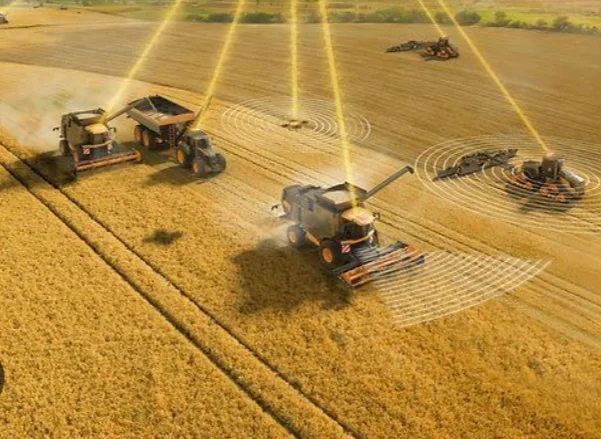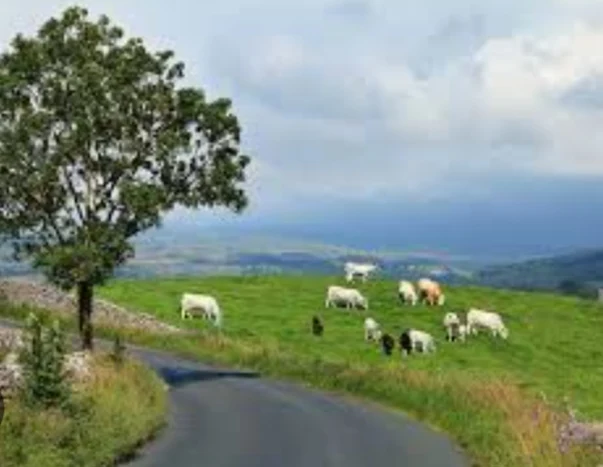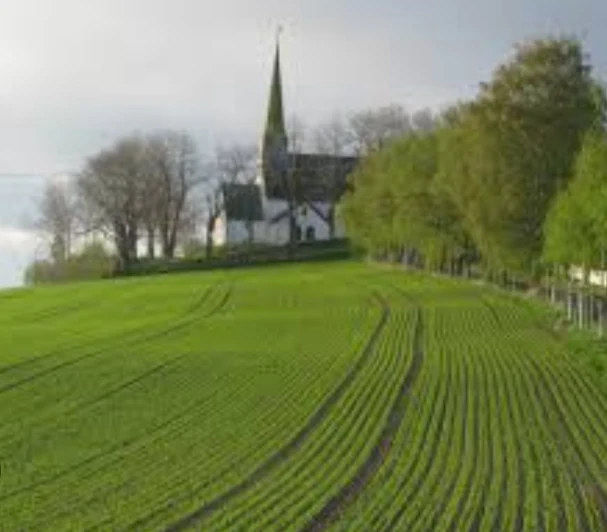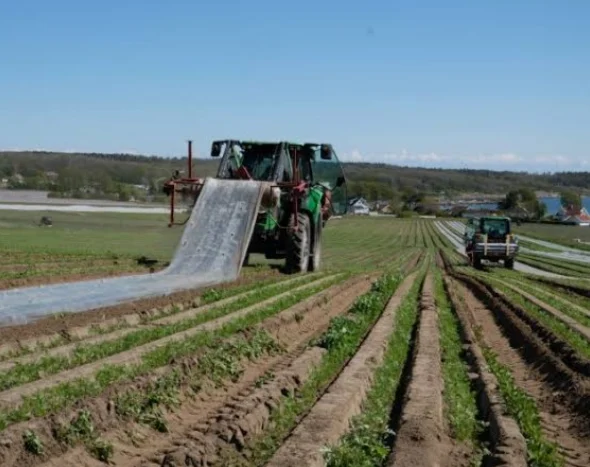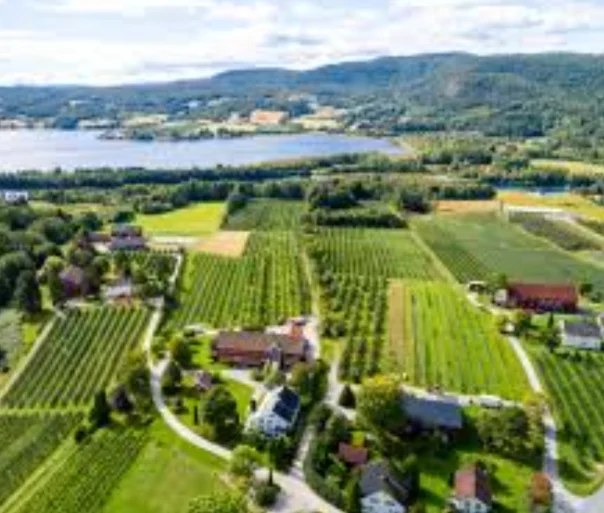History of Modern Agriculture in Norway
Norway's journey towards modern agriculture can be divided into several key phases:
Pre-Modern Foundations:
- Subsistence Farming (until 1800s): For centuries, Norwegian agriculture was characterized by small, family-operated farms focused on subsistence, with limited market participation due to harsh weather and rugged terrain. This involved practices like crop rotation, animal husbandry, and utilizing "outfields" - mountain pastures for summer grazing.
The Shift Towards Modernization (1800s - 1940s):
- Technological Advancements: The 19th century saw the introduction of new technologies like improved plows, threshing machines, and fertilizers. These innovations contributed to increased productivity and efficiency.
- Government Initiatives: The Norwegian government played a crucial role in promoting modernization through land reforms, educational programs, and establishing agricultural cooperatives.
- Shifting Demographics: Urbanization and industrialization led to a decline in the rural population, putting pressure on remaining farms to become more productive.
Post-WWII Developments (1940s - present):
- Intensification and Specialization: Post-war Norway witnessed significant intensification of agriculture, with a focus on larger farms, increased mechanization, and specialization towards specific crops or livestock products.
- Policy Emphasis: Government policies shifted towards income maintenance for farmers, environmental sustainability, and food security.
- Aquaculture Growth: Norway emerged as a pioneer in the field of aquaculture, becoming a global leader in salmon farming. This sector contributes significantly to the national economy and provides valuable export revenue.
Current Scenario:
Today, Norwegian agriculture is characterized by:
- High Efficiency: Despite challenging geographical conditions, Norway boasts efficient and highly productive farms.
- Focus on Quality and Sustainability: Emphasis lies on producing high-quality, safe food while minimizing environmental impact.
- Government Support: Government policies continue to play a crucial role in supporting farm incomes and promoting sustainable practices.
However, modern Norwegian agriculture also faces challenges:
- Competition: Global competition from other countries with lower production costs can affect the profitability of Norwegian farmers.
- Climate Change: The changing climate can negatively impact yields and necessitate adaptations in farming practices.
Norway's agricultural history reflects a constant struggle to adapt and thrive in a challenging environment. The transition from subsistence farming to a modern, efficient, and sustainable sector has been driven by technological advancements, government initiatives, and the resilience of Norwegian farmers.
Modern Agriculture in Norway: Statistic Data
Key Features of Modern Agriculture (Table)
| Feature | Description |
|---|---|
| Technology-Driven Approaches | |
| Precision Agriculture | Using advanced technologies like GPS, drones, and sensors to manage crops, soil, and water resources efficiently. |
| Automation | Employing automated systems for tasks such as planting, harvesting, and sorting to reduce labor costs and increase productivity. |
| Biotechnology | Utilizing genetic engineering to develop crops with improved traits, such as higher yields, resistance to pests and diseases, and enhanced nutritional value. |
| Data Analytics | Analyzing large datasets to gain insights into farming operations, optimize resource allocation, and make informed decisions. |
| Sustainable Practices | |
| Organic Farming | Producing food without the use of synthetic fertilizers, pesticides, or genetically modified organisms. |
| Permaculture | Designing agricultural systems that mimic natural ecosystems to promote biodiversity and sustainability. |
| Agroecology | Applying ecological principles to agricultural practices to improve soil health, conserve water, and reduce environmental impact. |
| Circular Economy | Adopting a system where waste products are recycled or reused as inputs, minimizing resource consumption. |
| Increased Efficiency and Productivity | |
| High-Yield Varieties | Cultivating crops with higher yields per unit area. |
| Improved Irrigation Systems | Implementing efficient irrigation methods to conserve water. |
| Pest and Disease Management | Employing integrated pest management strategies to minimize the use of chemical pesticides. |
| Mechanization | Using machinery to automate tasks, reducing labor costs and increasing productivity. |
| Focus on Food Safety and Quality | |
| HACCP (Hazard Analysis Critical Control Points) | Implementing a systematic approach to food safety to prevent contamination. |
| Traceability | Tracking food products from farm to table to ensure quality and safety. |
| Food Quality Standards | Adhering to international food quality standards to meet consumer expectations. |
Norwegian agriculture boasts a unique landscape:
- Land and Production:
- Only 3% of the land, roughly 1 million hectares, is dedicated to agriculture.
- Around 45,000 farms operate, averaging 22 hectares each.
- The agricultural output value reaches approximately 110 billion Norwegian kroner (NOK) annually.
- Livestock:
- Over 250,000 dairy cows and 100,000 beef cattle contribute to the industry.
- Roughly 1 million breeding ewes are present.
- The pig population sits around 1.2 million.
- Crops:
- Approximately 800,000 tonnes of grains, primarily barley and oats, are produced yearly.
- Fruit and vegetable production is limited by climate but is steadily increasing, reaching 130,000 tonnes in 2021.
- Potato production is substantial, with around 700,000 tonnes harvested annually.
- Sustainability:
- Over 12% of agricultural land is certified organic, with a growing trend.
- More than 98% of farms utilize renewable energy sources, primarily hydropower.
These statistics highlight the key aspects of modern Norwegian agriculture. Remember, the industry is constantly evolving, and these figures continuously change.
Modern Agriculture in Norway: Product
Modern Norwegian agriculture prioritizes high-quality, sustainable food production. Due to the nation's unique geography, the products grown and raised differ significantly from other agricultural regions. Here's an overview:
1. Meat and Dairy:
- Meat: Beef, lamb, and pork are the primary types of meat produced, with an emphasis on humane animal welfare and sustainable practices, leading to exceptional quality and taste.
- Dairy: Milk, cheese, and other dairy products are major contributors, with Norway being famous for its brown cheese (brunost), a unique caramelized whey cheese.
- Seafood: While technically not agriculture, Norway is a global leader in sustainable aquaculture, raising salmon, trout, and other seafood in cold, clean waters.
2. Fruits and Vegetables:
- The challenging climate limits the variety of fruits and vegetables grown. However, innovative technologies like greenhouses and vertical farming enable the production of high-quality local produce year-round.
- Common examples include apples, pears, strawberries, potatoes, carrots, and cabbage.
3. Specialty Products:
- Organic farming is gaining popularity, with consumers willing to pay a premium for products perceived as healthier and more environmentally friendly.
- Specialty crops like berries, herbs, and niche vegetables are also being grown in smaller quantities to cater to specific market demands.
Norwegian agriculture faces several challenges, including a short growing season, limited arable land, and harsh weather conditions. However, by embracing innovation, technology, and sustainable practices, Norwegian farmers are successfully producing high-quality food while minimizing their environmental footprint.
Modern Agriculture in Norway: Technology Adoption
Modern Norwegian agriculture heavily embraces technology adoption in various aspects, aiming for improved efficiency, productivity, and sustainability. Here are some key areas of technology utilization:
Precision Agriculture:
- GPS-guided machinery: Tractors and other equipment utilize GPS technology for automated and precise operations, including planting, spraying, and harvesting. This reduces waste, optimizes resource usage, and improves accuracy.
- Sensor technology: Sensors are employed to monitor soil conditions, crop health, and weather data. This real-time information allows farmers to make informed decisions about irrigation, fertilization, and pest control, leading to improved resource management and reduced environmental impact.
Automation and Robotics:
- Automated milking systems: Robotic milking machines efficiently manage dairy cow milking, freeing up labor for other tasks and ensuring consistent milking schedules, which improves animal welfare and milk quality.
- Automated feeding systems: Automated feeding systems for livestock ensure animals receive precise and consistent rations, promoting animal health and growth.
Information and Communication Technologies (ICT):
- Digital platforms: Farmers utilize online platforms for accessing weather forecasts, market information, and agricultural advice. This facilitates informed decision-making and helps them adapt to changing circumstances.
- Farm management software: Software applications assist farmers in managing data related to finances, production, and resource usage, enabling better planning, record-keeping, and optimization.
Other notable technologies:
- Controlled-environment agriculture (CEA) systems: These systems, such as greenhouses and vertical farms, allow for year-round production of crops, independent of harsh weather conditions, and often utilize advanced lighting and climate control technologies.
- Advanced breeding techniques: Techniques like selective breeding and genetic modification are employed to develop crop varieties and livestock breeds with improved yield, disease resistance, and other desirable traits.
However, technology adoption in Norwegian agriculture is not without challenges:
- Cost: Implementing advanced technologies can be expensive, posing a financial hurdle for smaller farms.
- Technical expertise: Operating and maintaining complex technologies requires training and ongoing support for farmers.
- Data privacy and security: Concerns exist regarding data collected by sensors and other technologies, requiring robust data protection measures.
Despite these challenges, technology adoption remains crucial for the future of Norwegian agriculture. By continuing to leverage advancements and address associated challenges, Norwegian farmers can further enhance their efficiency, sustainability, and competitiveness in the global market.
Modern Agriculture in Norway: Company Involved
While Norway's agricultural sector is dominated by small, family-owned farms, several innovative companies are contributing to the modernization and sustainability of the industry. Here are a few examples:
1. Nofence: This pioneering company has developed a world-first virtual fencing system for grazing animals. This technology allows farmers to define grazing areas electronically, eliminating the need for physical fences and promoting animal welfare.
2. Findmy: They offer GPS tracking collars for livestock, allowing farmers to monitor their animals' location and well-being remotely via smartphones. This technology improves animal management and reduces the risk of animals getting lost.
3. AquaGen: A leading breeding company specializing in Atlantic salmon. They utilize selective breeding techniques to improve the fish's resistance to disease and enhance their growth performance, contributing to a more sustainable and efficient aquaculture industry.
4. BioMar: This global aquafeed producer develops and manufactures high-quality, sustainable feed for various farmed fish species. Their focus on responsible sourcing and reducing environmental impact aligns with the broader commitment to sustainability in Norwegian agriculture.
5. The Njord Seafood Group: This vertically integrated seafood company encompasses various aspects of the salmon industry, from breeding and raising fish to processing and distribution. Their commitment to innovation and responsible practices demonstrates a dedication to a sustainable future for Norwegian seafood.
These are just a few examples, and the landscape of companies involved in modern Norwegian agriculture is constantly evolving. Many other companies are actively contributing through advancements in areas like precision agriculture, automation, and renewable energy use.

